Surprisingly, one of the most impactful tech upgrades I made wasn’t software, a new productivity tool, or even a faster computer—it was a simple pair of lenses. Blue light glasses haven’t just changed how I view my screens; they’ve changed how I function around them.
More Than a Fashion Statement
When most people hear “wearable tech,” they think of tools built around sensors, data, and connectivity, like smartwatches, biometric rings, or VR headsets. Blue light filtering glasses have none of that. No Bluetooth, no app integration, no buzzes or alerts. Still, they’ve become one of the most valuable tools on my desk.
I spend between 10 and 14 hours a day in front of screens. My workflow includes the usage of multiple monitors, a laptop, and a smartphone—often simultaneously. That means high-intensity screen exposure from the moment I start working until well into the evening. Over time, the accumulated strain starts to become overbearing.
The straightforwardness of the solution was part of what made it so effective. There was no software to configure, no onboarding steps, and no syncing across devices. I simply put on the glasses and they instantly became part of my setup, with zero friction.
The Source of Visual Stress Most Professionals Ignore
If your day revolves around digital work, screen exposure becomes the baseline. For me, it’s email, documentation, design, endless tabs, Microsoft Teams, Zoom, and occasional bursts of research.
Before wearing blue light glasses, I assumed the constant low-grade tension in my eyes, the drop in energy after 3 p.m., and the restless feeling at night were simply part of the job. Occupational hazards of a screen-based career.
That changed quickly once I purchased a pair of ANYLUV blue light blocking glasses. They’re nothing flashy, just a clean, well-constructed design with almost completely clear lenses. Within a few days, I began realizing that I was significantly more focused and less visually fatigued. The change has been drastic, consistent, and noticeable.
Unlike so much of today’s over-engineered gear, these glasses deliver exactly one function and execute it well. While my current pair is simple, there are more advanced smart glasses available that not only filter blue light but also offer features like audio and connectivity, combining style with functionality.
The Technology Behind the Lenses
What makes blue light glasses a legitimate piece of technology isn’t smart features, it’s optical engineering.
High-quality lenses are built with coatings that filter a specific segment of the visible light spectrum, mostly targeting high-energy visible (HEV) blue light between 400–450nm. This range is the most intense portion emitted by LED and OLED displays. That’s where the stress comes from.
The pair I use filters 45% of that spectrum. It’s enough to noticeably reduce visual strain without distorting color accuracy—a crucial consideration for anyone working with UI design, video editing, or simply navigating modern dark mode interfaces.
In addition to blue light filtration, the lenses include anti-glare and scratch-resistant coatings, which have proved to be particularly useful in my mixed lighting setup. I work in front of fluorescent lights in the day, and behind LED lighting in the evening, often with natural light beaming in from side windows. The glasses help maintain a consistent visual experience regardless of ambient lighting shifts.
It’s easy to forget that “tech” doesn’t have to mean “connected.” Sometimes, it means applying science and engineering principles to solve real-world problems without complicating the experience. These glasses are a perfect example. No power source, no syncing, no updates. Just a clean, purpose-built interface for your eyes.
Shocking Improvements in Focus and Mental Clarity
I assumed these glasses would help with eye strain and maybe reduce some late-night screen fatigue, but I didn’t buy them to increase my focus. However, what I experienced was a measurable improvement in sustained attention to my work.
Without the constant, subtle drain from screen exposure, my brain felt more available. There have been fewer mental detours during design sessions. I’ve stopped reaching for caffeine late in the day. More importantly, I’ve stopped feeling the steady cognitive decline that used to hit around the sixth or seventh hour of screen time.
Most professionals underestimate how much sensory input affects mental endurance. Every flicker, every bit of glare, every intense blue pixel builds up over time. When that load is reduced, your ability to concentrate extends noticeably.
What stands out to me most is how seamlessly this improvement has integrated into my workflow. I didn’t need to adopt a new habit or learn any fancy tricks—I simply put the glasses on and noticed that I could focus longer, think more clearly, and work with less interruption. There’s something incredibly efficient about a passive tool that delivers active results.
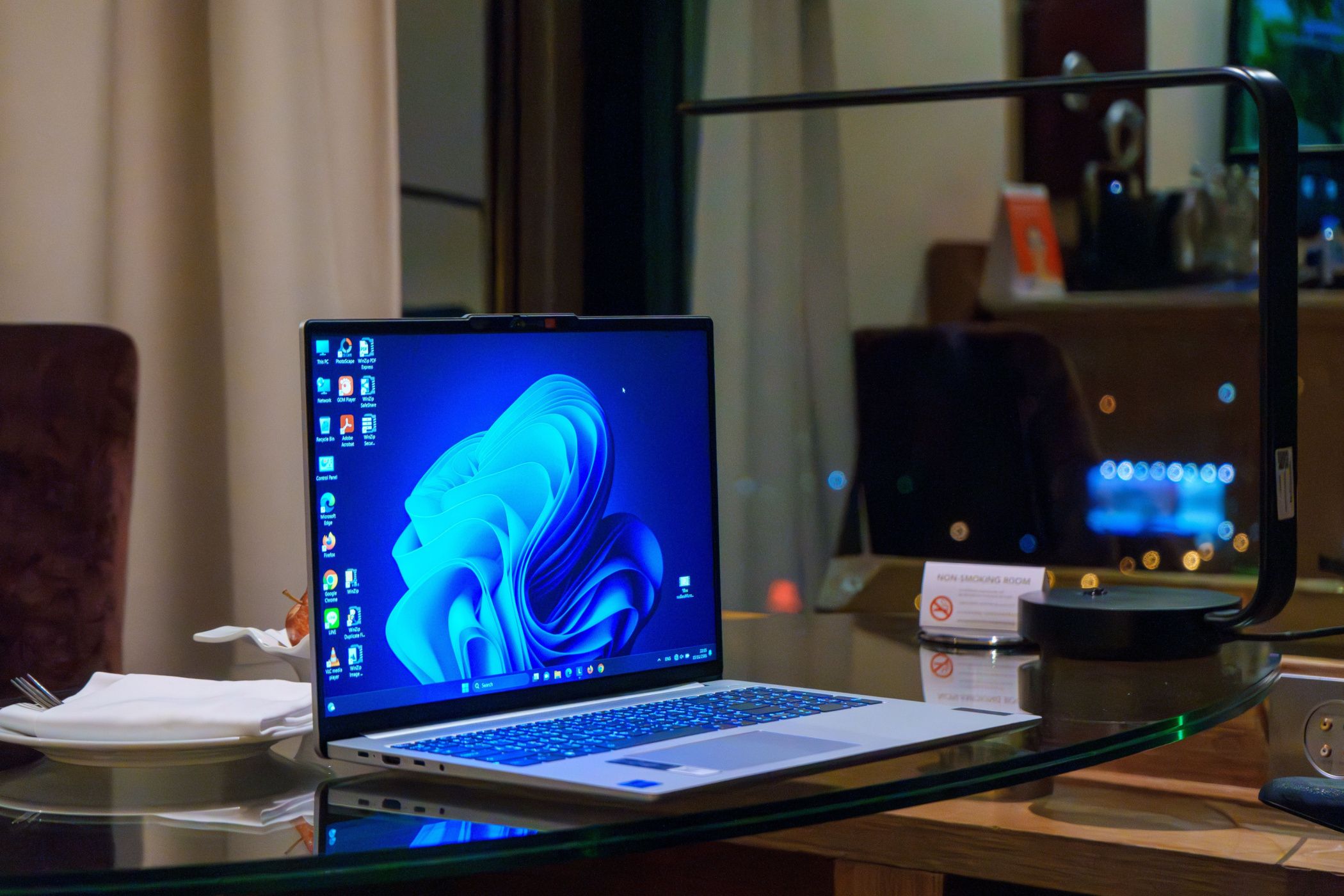
Related
Use This Windows Setting to Reduce Eye Strain
Turn on the night light and give your eyes a break.
A Consistent Visual Experience Across Devices
The benefits become even more obvious when I move between devices. I use my laptop, a 32″ display, a smaller ultrawide display, and my phone throughout the day—each with its own brightness level, resolution, and refresh rate. Before wearing glasses, that constant shift created visual friction. Brightness would vary, fonts would feel subtly off, and my eyes had to recalibrate every time I changed context.
Now, with the glasses on, the experience remains stable. My eyes aren’t adjusting to wildly different lighting conditions or color temperatures. It’s a small change, but one that creates a far smoother and more cohesive working environment.
In multi-monitor setups—especially with stacked or vertical layouts—the difference is even more noticeable. You’re surrounded by light sources, many of which are well outside your primary field of vision. That peripheral exposure contributes to fatigue, and the glasses mitigate it effortlessly.
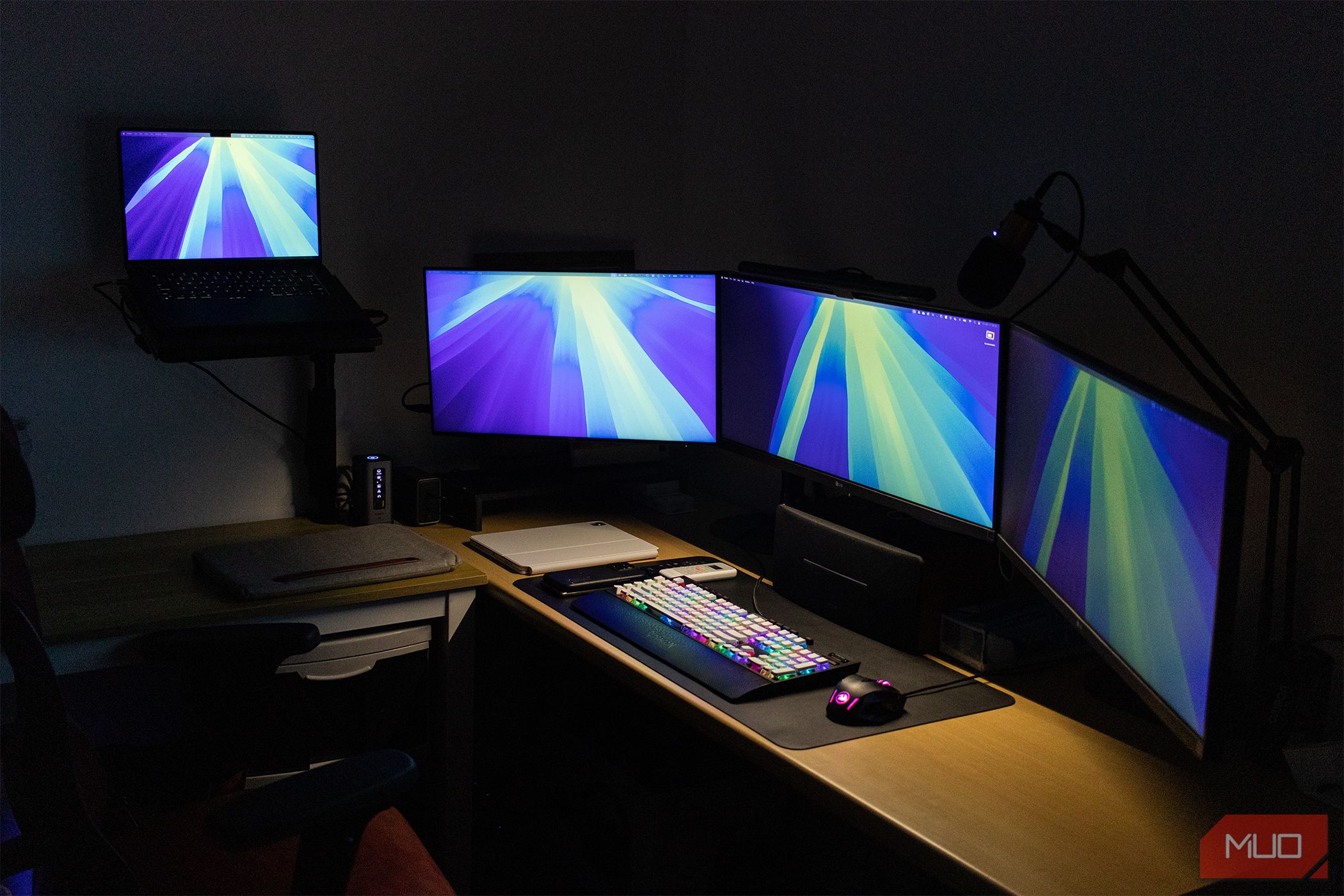
Related
I Have Four Monitors: Here’s How I Use Each One
It sounds like a lot, but it really helps me boost my productivity and compartmentalize my workflow.
That kind of plug-and-play effect is rare. Most gear I’ve added to my workspace requires some kind of integration, calibration, or troubleshooting. These don’t. To complement this setup, it’s crucial that you include the right desk accessories to maintain comfort and efficiency throughout the day.
The Unexpected Sleep Upgrade
The most pleasant surprise has been how much they’ve improved my sleep.
After a few evenings of wearing the glasses post-work, I noticed that I was falling asleep faster. I wasn’t restless, and I wasn’t lying awake with that wired, overstimulated feeling that often follows a long evening of work or a late-night gaming session.
I hadn’t changed anything about my bedtime routine. I still used screens right up until sleep, but the glasses have created a much-needed buffer. While some people rely on quality sleep tracking devices to optimize their sleep, my blue light glasses have provided a simple way to improve my overall rest without any cumbersome technology.
What to Look For in a High-Quality Pair
Here’s what you should prioritize when evaluating a solid pair of blue light filtering glasses:
- Effective Filtration: Look for lenses that block at least 35% of HEV light in the 400–450nm range.
- Color Accuracy: Clear or nearly clear lenses are best for daytime use and professional work. Reserve darker amber tints for nighttime-only use.
- Lens Coatings: Ensure the lenses have anti-glare, anti-smudge, and scratch-resistant coatings. These factors will matter more than you expect.
- Comfortable Design: Just like any other pair of glasses, lightweight, well-balanced frames are critical for all-day wear. Poorly balanced frames become unbearable after an elongated period of time.
- Credible Manufacturers: Opt for brands with a background in optical engineering. Generic online sellers often sacrifice filtration precision and build quality.
The price range for blue light glasses varies widely, anywhere from $20-$200. Your best bet is to look at reviews and talk to others who use them regularly. Aside from ANYLUV, I’ve heard of good experiences with brands like Gunnar and Felix Gray, though there are several other specialized options worth considering.
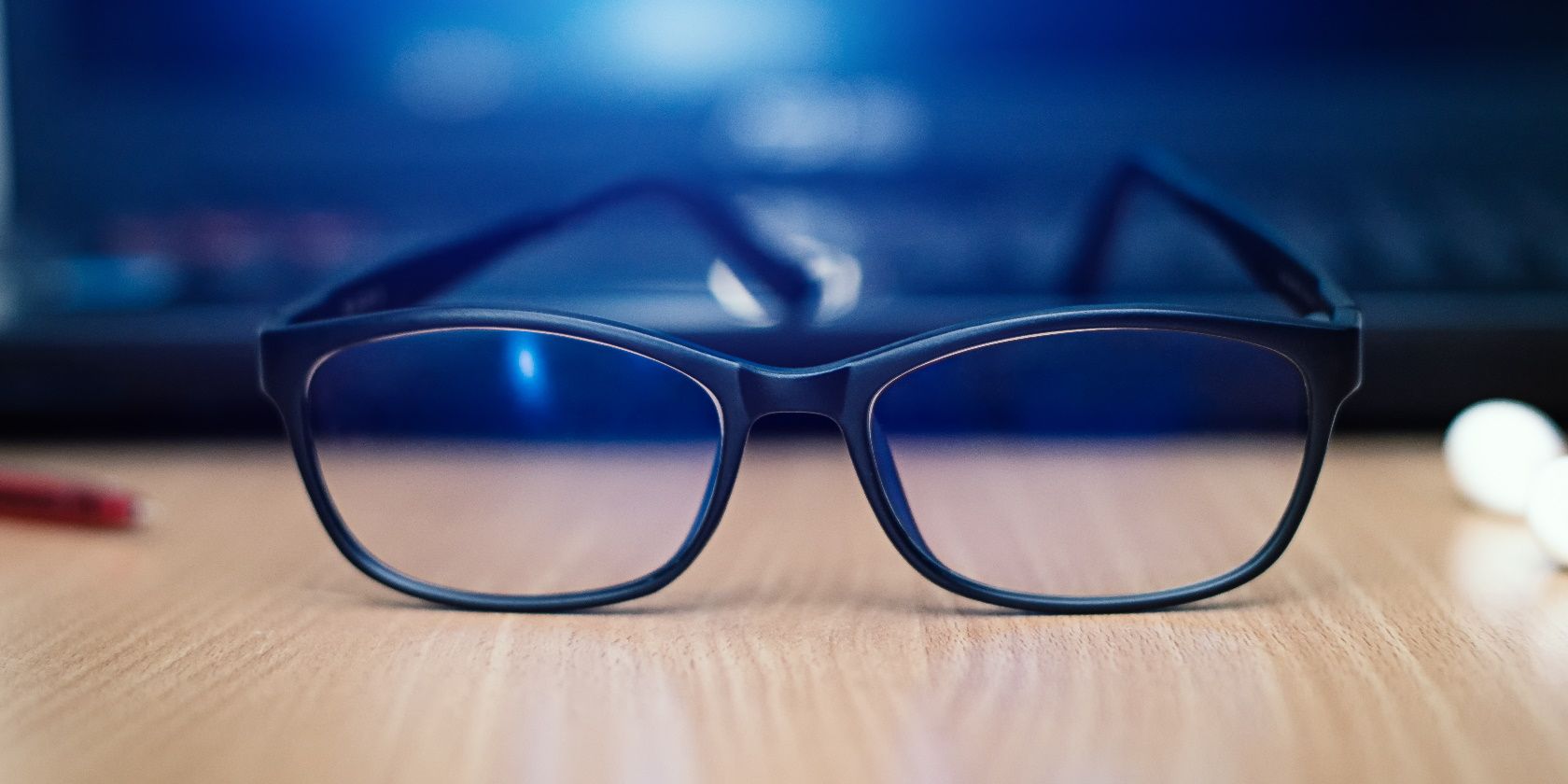
Related
The Best Gaming Glasses for Blocking Blue Light
Are you hunkering down for a long gaming session? Ensure your eyes are protected from harmful blue light with these stylish glasses.
After years of optimizing my workflow with upgraded hardware, ergonomic peripherals, and high-end monitors, I didn’t expect a pair of glasses to deliver one of the most significant performance gains in my routine. If your daily work depends on screens—as most modern work does—a well-built pair of blue light glasses is one of the simplest and smartest upgrades you can make this year.



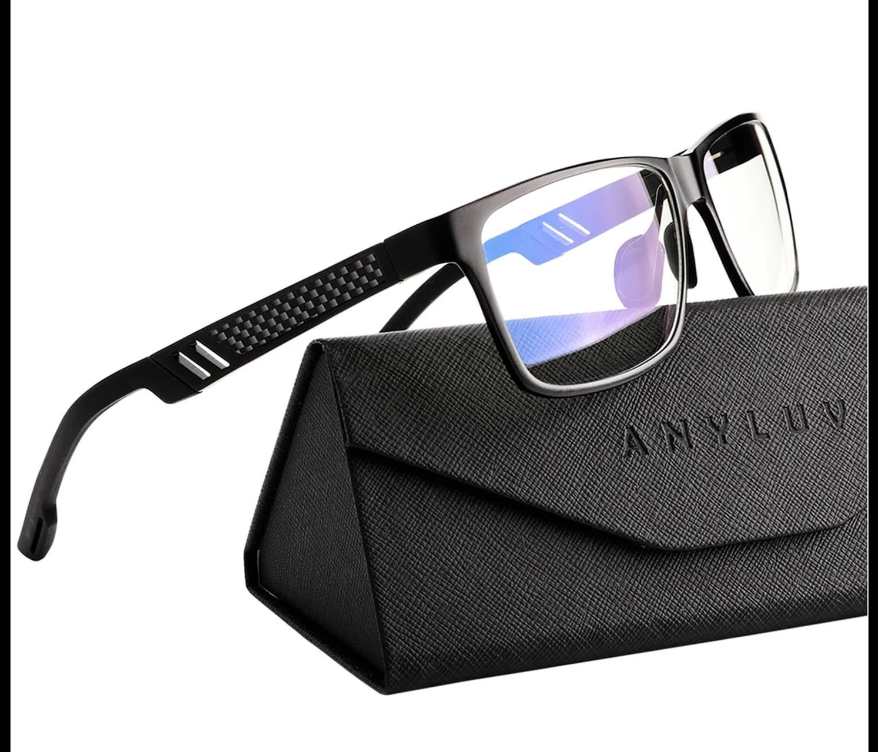
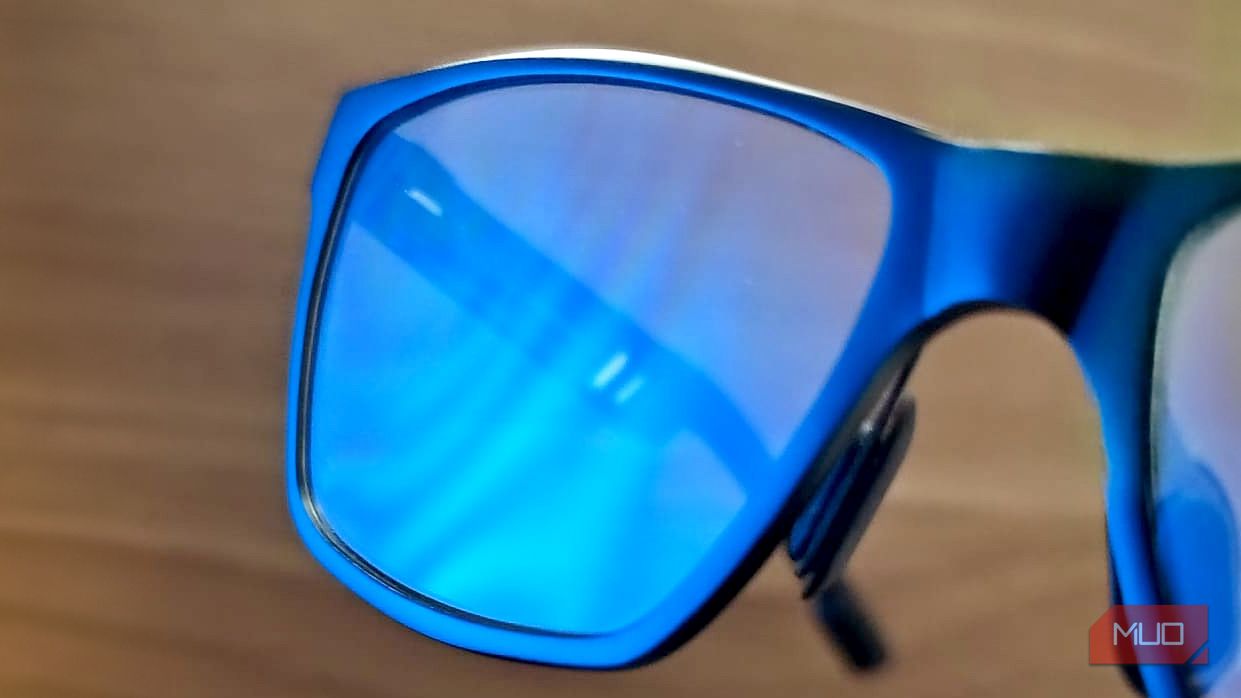
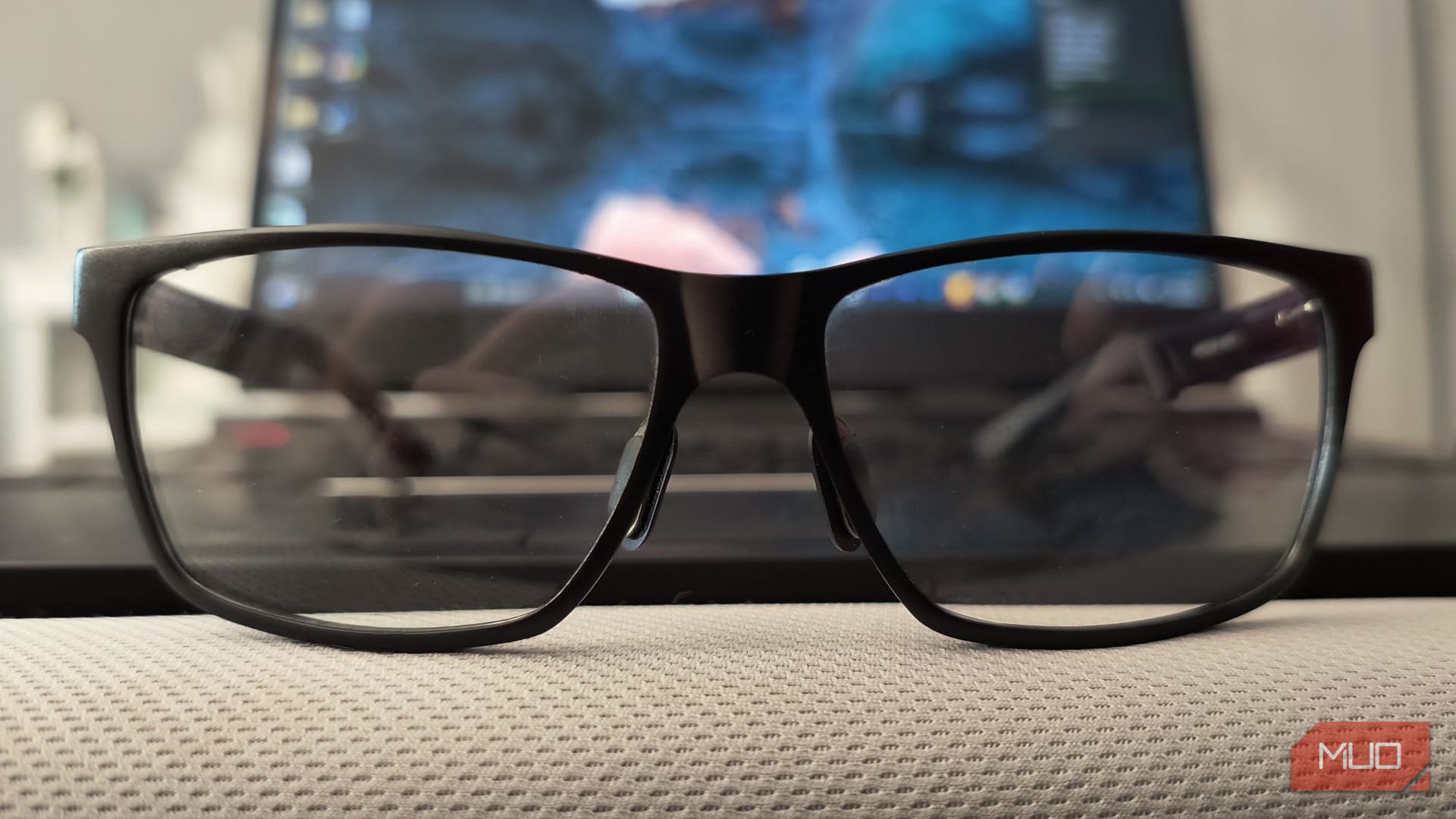
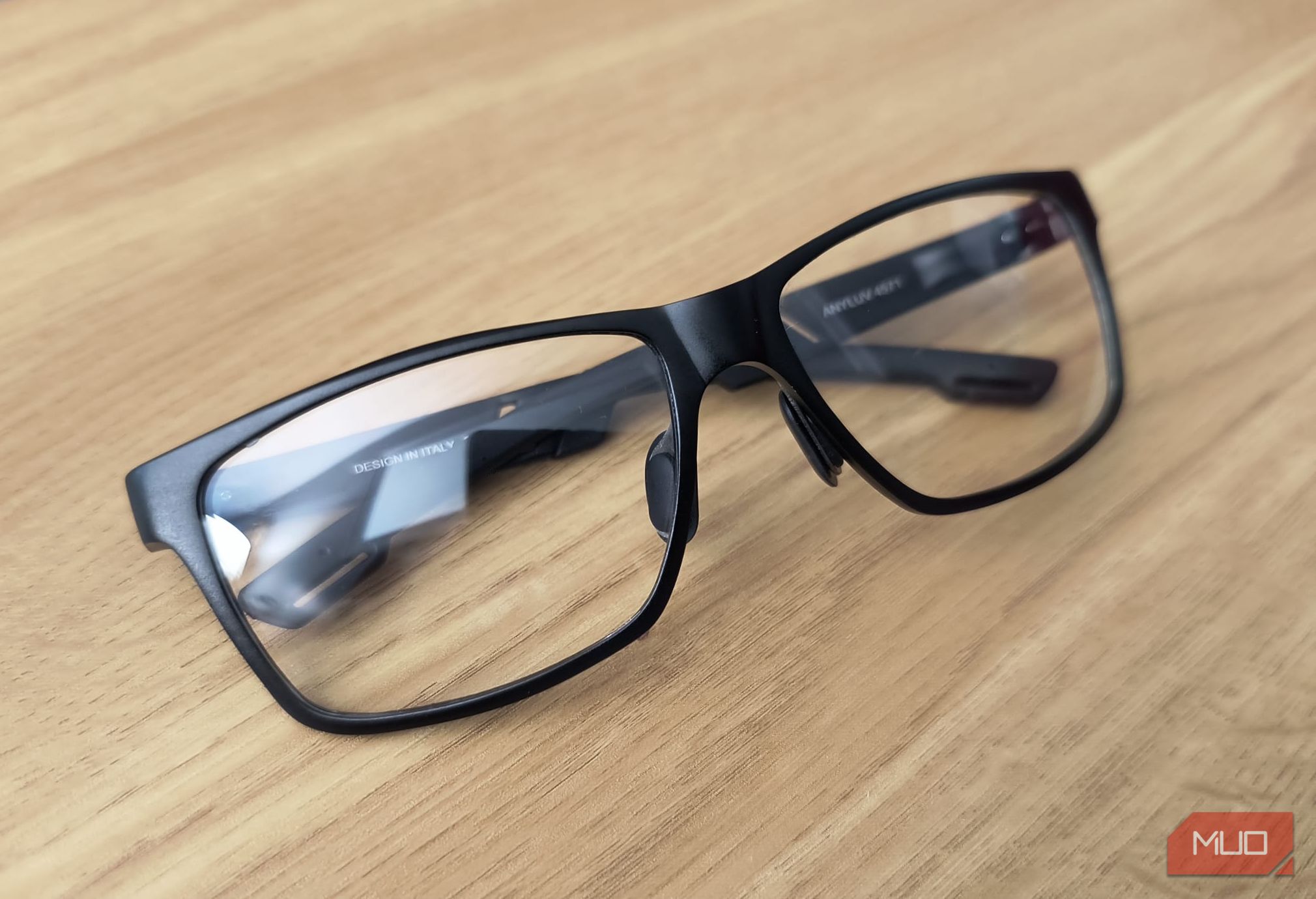





Leave a Comment
Your email address will not be published. Required fields are marked *